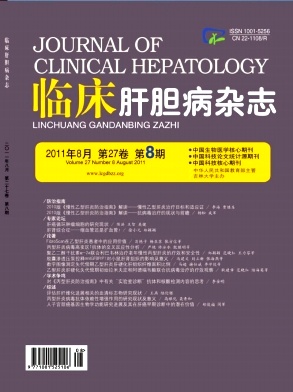|
[1]Poordad F.Review article:thrombocytopenia in chronic liver disease[J].Aliment Pharmacol Ther, 2007, 26 (Suppl 1) :5-11.
|
|
[2]Afdhal N, McHutchison J, Brown R, et al.Thrombocytopenia asso-ciated with chronic liver disease[J].J Hepatol, 2008, 48 (6) :1000-1007.
|
|
[3]Rodeghiero F, Stasi R, Gernsheimer T, et al.Standardization of ter-minology, definitions and outcome criteria in immune thrombocytope-nic purpura of adults and children:report from an international work-ing group0[J].Blood, 2009, 113 (11) :2386-2393.
|
|
[4]Toghill PJ, Green S, Ferguson F.Platelet dynamics in chronic liverdisease with special reference to the role of the spleen[J].J ClinPatho, 1977, 30 (4) :367-371.
|
|
[5]Aster RH.Pooling of platelets in the spleen:role in the pathogenesiso‘fhypersplenic’thrombocytopenia[J].J Clin Invest, 1966, 45 (5) :645-657.
|
|
[6]Kajihara M, Okazaki Y, Kato S, et al.Evaluation of platelet kineticsin patients with liver cirrhosis:Similarity to idiopathic thrombocyto-penic purpura[J].J Gastroenterol Hepatol, 2007, 22 (1) :112-118.
|
|
[7]Blonski W, Siropaides T, Reddy KR.Coagulopathy in liver disease[J].Curr Treat Options Gastroenterol, 2007, 10 (6) :464-473.
|
|
[8]Giannini EG.Review article:thrombocytopenia in chronic liver dis-ease and pharmacologic treatment options[J].Aliment Pharmacol T-her, 2006, 23 (8) :1055-1065.
|
|
[9]Eissa LA, Gad LS, Rabie AM, et al.Thrombopoietin level inpatients with chronic liver diseases[J].Ann Hepatol, 2008, 7 (3) :235-244.
|
|
[10]Giannini EG, Savarino V.Thrombocytopenia in liver disease[J].CurrOpin Hematol, 2008, 15 (5) :473-480.
|
|
[11]Pereira J, Accatino L, Alfaro J, et al.Platelet autoantibodies in pa-tients with chronic liver disease[J].Am J hematol, 1995, 50 (3) :173-178.
|
|
[12]Pockros PJ, Duchini A, McMillan R, et al.Immune thrombocytope-nic purpura in patients with chronic hepatitis C virus infection[J].JGastroenterol, 2002, 97 (8) :2040-2045.
|
|
[13]王兆钺.免疫性血小板减少性紫癜的发病机制与临床研究进展[J].中国免疫学杂志, 2009, 25 (12) :1141-1144.
|
|
[14]Sekiguchi T, Nagamine T, Takagi H, et al.Autoimmune thrombocyto-penia in response to splenectomy in cirrhotic patients with accompanyinghepatitis C[J].World J Gastroenterol, 2006, 12 (8) :1205-1210.
|
|
[15]Aref S, Sleem T, El Menshawy N, et al.Antiplatelet antibodiescontribute to thrombocytopenia associated with chronic hepatitis C vi-rus infection[J].Hepatology, 2009, 14 (5) :277-281.
|







 DownLoad:
DownLoad: